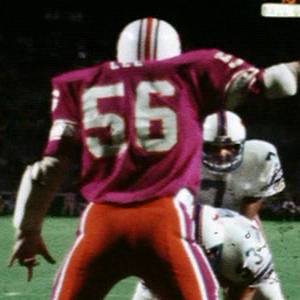

Southern California
WFL
Sun
- 1975 Head Coach Tom Fears, the
All Everything former UCLA and Rams receiver was pleased with the performance of
his staff of coaches and brought them back for another season. Offensive
coordinator Babe Dimancheff, defensive coordinator Ed Cody, offensive backfield
coach and former Falcons, Giants, and Saints fullback Ernie Wheelwright,
offensive line coach Dick Enright, and defensive line coach and former Chicago
Bear great Earl Leggett had a great deal of respect from their players and were
game to give the WFL another year. The Sun had made a big splash before the 1974
season had started by signing USC All America offensive lineman Booker Brown and
the UCLA running back tandem of Kermit Johnson and James McAlister. Going into
the playoff game that the Sun qualified for McAlister was injured and Brown and
Johnson refused to play having not been paid for the season’s final regular
season game. The Sun made just as big a splash for 1975 signing one of the major
names in college football and a sure fire bet to destroy the salary structure of
the Hemmeter Plan. Anthony Davis was a true-to-life Southern California football
hero and the Sun had him, not the NFL. Davis was Los Angeles Co-Player Of The
Year after completing his high school career as a quarterback at San Fernando
H.S. He topped off his senior prom by being named the Los Angeles Player Of The
Year for baseball too and was City champion in wrestling. As perhaps the most
highly recruited schoolboy in the nation, he chose Southern Cal where he played
outfield for the National Championship USC team in the spring and led the
football team to a national championship. He had remarkable games against Notre
Dame and was runner-up in the Heisman Trophy voting, losing out to Archie
Griffin of Ohio State. His list of team and conference records was staggering.
USC teammate and Rhodes Scholar Pat Haden joined Davis as a member of the Sun
with another USC standout, J.J McKay. Thus, the USC quarterback, his favorite
receiver, one he had teamed with since their days at Bishop Amat H.S., and the
top running back in the country were all members of the 1975 Southern California
offensive unit. That Haden was slated to leave the team to fulfill his Rhodes
Scholarship responsibilities at Oxford University in mid-September did not stand
in the way of his starting. Daryle Lamonica however did and was penciled in as
the number one signal caller after jumping to the Sun from the Oakland Raiders.
Lamonica was a very highly respected passer, known as the “Mad Bomber” for his
skyscraper-like throws to deep route receivers, a penchant that had taken the
Raiders and his former team, the Buffalo Bills, to a number of titles.
Unfortunately, Lamonica was injured early in the season and retired shortly
thereafter. With six members of the 1974 offensive line returning, the Suns
entered the 1975 season with great optimism.



There was a slight alteration in the jersey sleeve stripe pattern but the Sun uniform was essentially the same as it was in 1974. The helmet logo remained unique with a sun decal that seemed to give off heat and the striping design of the distinctive Sun color combination. There was a difference in helmet striping appearance between the MacGregor and Riddell shells, both worn by Sun players, with a gapped appearance presented by one and a thicker center stripe with the other. Their white jersey with “opposite from the helmet” sleeve stripes of orange-white-magenta-white-orange arrangement was nicely set off by the orange pants with magenta stripe, perhaps more so than the dark magenta jersey which for many, seemed to be “too much” California style.
BACK...